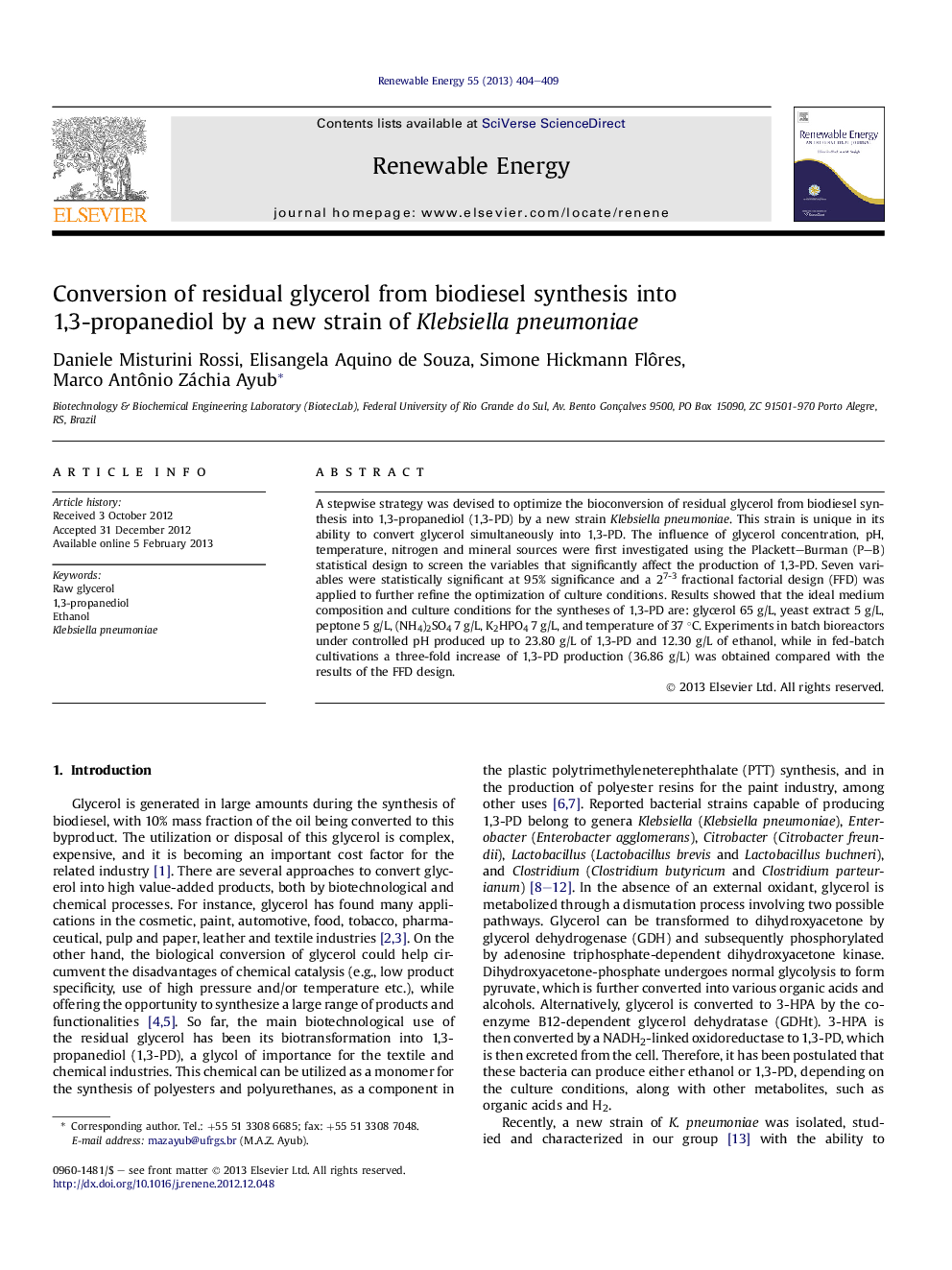| Article ID | Journal | Published Year | Pages | File Type |
|---|---|---|---|---|
| 300575 | Renewable Energy | 2013 | 6 Pages |
A stepwise strategy was devised to optimize the bioconversion of residual glycerol from biodiesel synthesis into 1,3-propanediol (1,3-PD) by a new strain Klebsiella pneumoniae. This strain is unique in its ability to convert glycerol simultaneously into 1,3-PD. The influence of glycerol concentration, pH, temperature, nitrogen and mineral sources were first investigated using the Plackett–Burman (P–B) statistical design to screen the variables that significantly affect the production of 1,3-PD. Seven variables were statistically significant at 95% significance and a 27-3 fractional factorial design (FFD) was applied to further refine the optimization of culture conditions. Results showed that the ideal medium composition and culture conditions for the syntheses of 1,3-PD are: glycerol 65 g/L, yeast extract 5 g/L, peptone 5 g/L, (NH4)2SO4 7 g/L, K2HPO4 7 g/L, and temperature of 37 °C. Experiments in batch bioreactors under controlled pH produced up to 23.80 g/L of 1,3-PD and 12.30 g/L of ethanol, while in fed-batch cultivations a three-fold increase of 1,3-PD production (36.86 g/L) was obtained compared with the results of the FFD design.
► A new strain of Klebsiella pneumonia was isolated. ► This strain efficiently converts raw glycerol from biodiesel synthesis into 1,3-PD and ethanol. ► A stepwise strategy was devised to optimize the bioconversion of glycerol in the bioprocess. ► Batch and fed-batch bioreactor cultivations were carried out.
